Welcome to Purple Pawn, covering games played around the world by billions of people every day.
Cranium Games: The Story So Far
20 May
Posted by Yehuda Berlinger as Card Games, Electronic Games, Modern Board Games
For those of you joining us on your Kindle, here’s our story of the Cranium family, so far:
1998
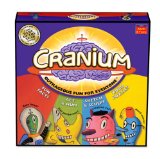
Our story begins with old man Cranium. Born in 1998, Cranium came from a highly mixed ancestry, inheriting traits from every major party game family. Its maternal grandfather came from the Trivia clan, including such famous games as Trivial Pursuit. Its maternal grandmother was a Wordsmith – second cousin to the Trivia’s – which includes games where you have to spell words and give definitions. Its paternal grandfather was of the Drawing game family, including Pictionary and the like. And its paternal grandmother from that most illustrious of party game families: Charades.
Cranium exhibits traits from all of these. Some have gone so far as to call it schizophrenic. What a player has to do on his or her turn depends entirely on the roll of the die. Which means that it appeals to the family that can’t agree on what to play. Or rather, as the marketing put it, it gives everyone a chance to shine, assuming that everyone includes fans of all four of these major game families.

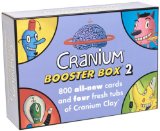
Of course, the maternal side of the family was the weaker side: trivia and question cards only go so far before everyone’s tired of the same old routine. Cranium had to go back to work and come up with Cranium Booster Box 1 in 1998, and Cranium Booster Box 2 in 2000.
In addition, your basic cranium comes in several editions, such as Cranium Primo Edition and Cranium Tin Edition.
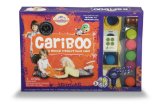
Old man Cranium didn’t arrive alone. Following on his heels was his young cousin, Cranium Cariboo. Cranium Cariboo is a cooperative game of matching patterns and trying to find all the balls hidden in the box. While Cranium worked the grownups, Cariboo worked the kids. Both are still successful today. From their success, a new Cranium empire emerged.
2001
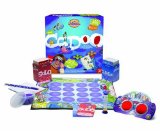
When Cranium was three years old (healthy and mature for a board game), it gave birth to a son, Cranium Cadoo. Cranium Cadoo fits a middle ground between the adult Cranium and the pre-school Cariboo. In Caboo, you try to get four in a row, but you can only place your piece if you fulfill an activity as determined by a die and a card.
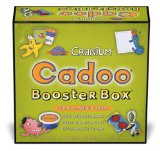
Cadoo started off as a model youth. It even had its own Cranium Cadoo Booster Box the same year. Unfortunately, Cadoo had a troubled, poisonous teenage-hood. The dice in Cadoo versions produced between October 2007 and January 2008 were found to have excess lead. Cranium issued a warning and still will replace the die for free. After this unfortunate incidence, Cadoo settled back into responsible adulthood.
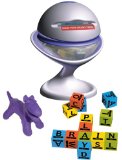
In 2001, Cranium began to market itself as a brand. Slapping the word “Cranium” onto something no longer implied that the something was a game. There are Cranium calendars, Cranium toys, and Cranium toilet paper for all I know. The first was Cranium Cosmo. It is made of 15 index cards that sit on your office desk , each of which contains an activity to do to break the boredom of a day at your office job. Is it a game? A toy? No one quite knows.
Tragedy Struck New York on September 11, 2001. Wanting to do something with their new found wealth, Cranium sent a personal aid – Cranium: New York Booster Pack – to raise money for the September 11th Fund. The pack has 45 cards, all with NY related words or questions.
2002
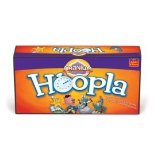
Having filled the pre-school and kids niches, it was back to adults for old man Cranium. Cranium’s next progeny was Cranium Hoopla, a cooperative game that uses the mechanics of Celebrities, but in Cranium style: players have to guess a series of cards using different types of clues within 15 minutes. Players all win or lose together. And, though still the Cranium version of fun, it is considered to be a pretty tough challenge.
Cranium then took a vacation for the rest of the year.
2003
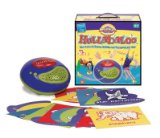
Back on the kid’s track, Cranium gave birth in 2003 to Cranium Hullabaloo, the bestselling Cranium game today. Again, it’s more of a party activity, something like Twister for kids, where a narrator tells kids what to do and they do it. And once in a while, someone randomly gets chosen as a winner.
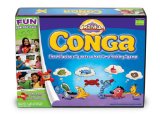
Another kids game, Cranium Conga is a Wits and Wagers style game. A player draws a card and then has to draw or sculpt an answer, while the other players guess what the answer is. Players guess in turn, passing around a hot potato item. If the answer is guessed, the guesser an guessee each get points.
What was old man Cranium doing while the kids were playing? He went north to Quebec and learned French, in Cranium Édition Québécoise. The culture changed, but the old man remained the same. There is also a Cranium Canadian English Edition (and a Cranium Australian Edition).
2004
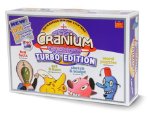
Old man Cranium returned from his Northern vacation with a new heir. Cranium Turbo Edition is like old Cranium, but includes many new types of activities: word scrambles, word definitions, trivia, drawing, clay modeling, charades, name that tune, item identification, to name a few. How about controlling another payer like a puppet? And it also comes with a timer with lights.
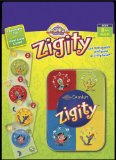
Cranium’s first grandchild was Cranium Zigity. Zigity is a shedding card game, where the color of the card revealed indicates which of the four ways you can play your cards: numerical, matching, set completion, or word creation. It’s for small children, but the cards are transparent plastic and supercool.
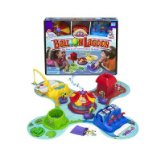
The next grandchild was Cranium Balloon Lagoon. Balloon Lagoon is another aimed at the wee folk. The four activities here are all dexterity or luck activities.
2005
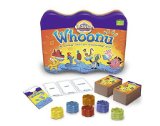
The new generation of the Cranium family turned touchy feely with Cranium Whoonu. Whoonu, like Apples to Apples, has each player guessing which card the judge will like best, and each player can take a turn to be the judge. The judge ranks the cards from favorite to least favorite. In this way, you get to know the player’s likes and dislikes.
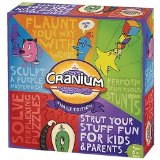
Taking the baton from Turbo, Cranium Family (Fun) Edition is a more relaxed version of the original, where players of reading age and higher can play together. Includes an expanded list of activities.
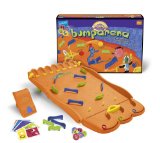
The ADHD step-sibling of Family is Cranium Bumparena. Bumparena has players building a maze/pinball out of plastic and then releasing balls into their contraption. You have to get six balls into the right places to win.
2006
The Cranium empire really picked up speed in 2006, branching out all over the place.
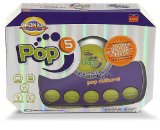
Cranium Pop 5 is a twist on the old Cranium: The opposing team of the player whose turn it is picks a card with some pop item on it. The opposing team decides on how many points the other team will get if the player whose turn it is gives his or her fellow teammates clues using each of five activity types. The one they think is the hardest will yield more points; the lowest, the least points. The player whose turn it is then decides whether to go for the higher or lower score.
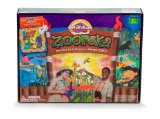
Cranium Zooreeka is an actual decision making game, and not a party game at all. The decisions are pretty simple, and the game is still mostly luck, but you get to bid on what dice roll up and collect resources when you’re right. Meanwhile, you get to build a small zoo.
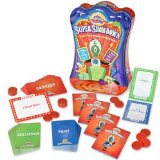
Back into party games, Cranium Super Showdown is a judging game. Two ridiculous contestants are revealed, and one ridiculous contest, and you get to decide who would win the battle.
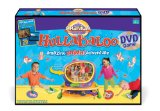
Moving onto the TV screen, Cranium Hullabaloo DVD Amazing Animal Adventure is, like so many other DVD games, a simplistic version of Simon Says, themed about animals. There is also the un-themed Craniumì Hullabaloo DVD Party Edition.
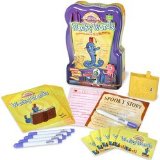
Cranium Wacky Words is basically a version of Mad-Libs, where words are assigned by a spinner.
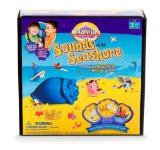
Even dynasties produce the occasional dud. Cranium Sounds of the Seashore is a simple game of listening to a pre-recorded sound and then matching it to a tile. Only, the physical element of the game is too sensitive for the clumsy hands of kids of the correct age group.
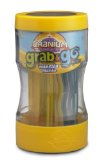
And then along came the Grab and Go clan. Over the course of two years, Cranium spawned nine games in cylindrical tubes, all of which were supposed to be portable versions of classic games with a twist (a variant, an added die, etc). None of which have much to do with Cranium, other than the name. I’m pretty sure the games were already in place, and then someone decided to slap the Cranium brand name onto them. Take ’em or leave ’em.
You got Cranium Grab and Go Mancala Mania, Cranium Grab and Go Super Sudoku, Cranium Grab and Go Hoppity Winks, Cranium Grab and Go Checkers Extreme, Cranium Grab and Go Super Jacks, Cranium Grab and Go Connect-O-Round, Cranium Grab and Go Mega Marbles, and Cranium Grab and Go Turbo Tic Tac Toe.
These multiple births are now a regular part of the Cranium family tradition.
2007

Cranium Wow is the next generation of Cranium, the direct descendant of old man Cranium, if you will. More cards and activities, same game play as the original game, and targeted to adults. The pieces and board are pretty gnarly.
Expansion card sets are available. So are replacement modeling clay tubs, by the way.
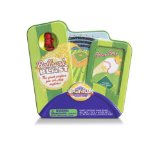
Cranium Ballpark Blast is another pretender to the Cranium lineage with no real credentials. It was released by Starbucks Coffee, and is a simple dice throwing baseball game played over three innings.
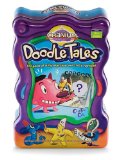
Back on track, Cranium Doodle Tales is a doodling party game. One player draws the missing part of the picture, and the others make a story from what was drawn.
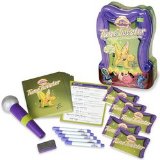
In Cranium Tune Twister, you make up lyrics to tunes and then sing them (I do that while I’m doing the dishes, anyway). You get points if the singer chooses your lyrics.
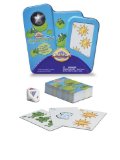
Cranium Matching Madness is a shedding game with a deck of cards isomorphic to the deck from Set. Only here, you roll a die and play a card if it matches the criteria on the die.
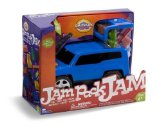
Cranium Jam Pack Jam is a toy-based game, like Perfection. You get to jam items into the van in the order chosen by the cards before the alarm goes off.
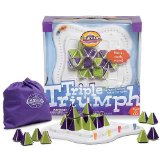
Cranium Triple Triumph is an abstract strategy game, also with no real relation to the Cranium family line. As far as strategy goes, you pretty much just score the most points you can each turn, and that’s it.
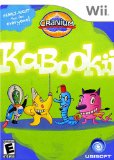
Cranium Kabookii is the first digital only game, created for the Nintendo Wii. I’m guessing the Wii because it’s the type of console that brings multiple players together, and also allows for multiple types of activities. I expect that the game could also function on an Ipod or IPhone. (see Cranium Mobile, below)
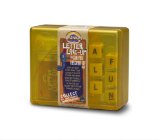
Cranium Letter Line-Up is a descendant of Hoopla. Pick a card and roll the dice. You can describe the hidden item using the words starting with the letters on the dice. Game kind of ends when the 65 cards run out, however.
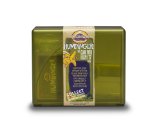
Cranium Humdinger: ditto, but you have to hum or blow on the kazoo.
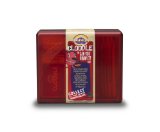
Cranium Cloodle: ditto, but you have to draw the item.
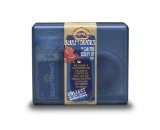
Cranium Sculptorades: ditto, but you have to sculpt the item (from 2008).
Letter Line-Up, Cloodle, Humdinger, and Sculptorades form the “Favorites” line of Cranium products: 5 minute games for two players.

The next series was called Squawkbox. A talking thingamajig dispenses cards and tells you what your legal plays are each turn. The games are part strategy, and lots of luck.
In Cranium Squawkbox Pirate’s Passage, you try to build a route, blocking the other player’s route, while the talking box tells you to add a card, rotate a card, or so on. In Cranium Squawkbox Lunch Munch, you do the same thing with meals. In Cranium Squawkbox Bug Hunt, you race against time to build jitterbugs.
Whew. That was a fruitful year.
2008
2008 was a little more constrained, and produced mostly games for the very young.
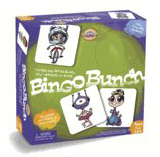
Cranium Bingo Bunch is another Starbucks coffee exclusive. Two players roll dice and then turn over cards, trying to get four in a row or a blackout. Not much Cranium here.
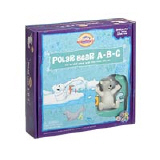
Cranium Polar Bear ABC and Cranium Duck Duck 1-2-3 are simple games with animals for wee ones that teach spelling and counting, respectively.
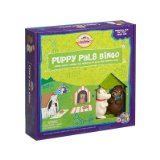
While Cranium Puppy Pals Bingo is a simple game of matching patters and shapes.
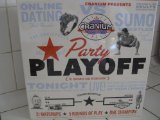
Cranium Party Playoff is a descendant of Super Showdown.
2009
Which brings us to the latest developments in 2009, which is also filled with games for the youngest of players.
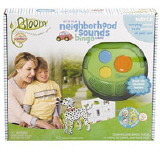
Cranium’s new Bloom series of games are all meant to be first learner experiences for small children. In addition to activity sets and toys, the games include Cranium Bloom Let’s Play Count and Cook, Cranium Bloom Let’s Play Neighborhood Memory, Cranium Bloom Let’s Play Neighborhood Sounds Bingo, Cranium Bloom Let’s Play Sandwich Stacker Lunchtime Cookout, Cranium Bloom Let’s Play Sandwich Stacker Lunchtime, and Cranium Bloom Let’s Play Shop and Match.
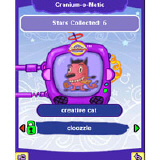
Unlike Kabookii, Cranium Mobile from EA Mobile is a bunch of casual games for your mobile phone, but doesn’t include kinetic challenges.
Hasbro’s Cranium website also contains a number of free print and play games and additions to the published games, as well as activities and a club. As far as online play goes, you used to be able to play Pop 5 Live on MSN Games, but that ended in 2007.
And that’s the story of Cranium, so far.
5 Comments
Sorry, the comment form is closed at this time.
Trending
- Massdrop.com
- Oh the Irony—Illuminati Card Game Continues to Inspire Conspiracy Theorists
- Footprints, an Educational Ecology Game
- USPS Adds Board Game Flat Rate Box
- Home
- Baila, the Estonian Drinking Card Game
- Crystal Caste Wins Dice Patent Suit Against Hasbro
- Mirror Game, Red and Blue
- Hasbro and Mattel Merger?
- Are Board Games Dangerous?
Archives
Most Popular Articles
- Oh the Irony—Illuminati Card Game Continues to Inspire Conspiracy Theorists
- The 20 Most Valuable Vintage Board Games
- The Truth About Dominoes On Sunday in Alabama
- Sequence Game, and Variants
- USPS Adds Board Game Flat Rate Box
- Baila, the Estonian Drinking Card Game
- The 13 Most Popular Dice Games
- Are Board Games Dangerous?
- Guess Who? The Naked Version
- What Happened to the Jewel Royale Chess Set?
Recent Posts
- Toy Fair 2019—Breaking Games
- Talisman Kingdom Hearts Edition
- Toy Fair 2019—Winning Moves
- Toy Fair 2019—Games Workshop
- Toy Fair 2019—Star Wars Lightsaber Academy
- Toy Fair 2019—Stranger Things Games
- Toy Fair 2019—HABA
- Licensing Roundup
- Game Bandit
- 2018 A Difficult Year For Hasbro But Not For D&D Or MtG
Recent Comments
- on Toy Fair 2019—Winning Moves
- on Game Bandit
- on Second Look—Dungeons & Dragons Waterdeep Dragon Heist
- on Crowdfunding Highlights
- on Beyblade SlingShock
- on Game Bandit
- on Game Bandit
- on Watch This Game!, the Board Game Review Board Game
- on Second Look—Vampire: The Masquerade 5th Edition
- on Palladium Books Loses Robotech IP License, Cancels Five-Year-Overdue Robotech RPG Tactics Kickstarter

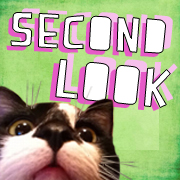
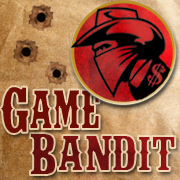
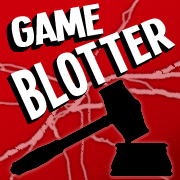
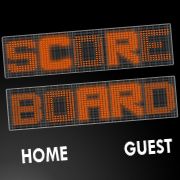
What an excellent retelling of the Cranium story. After hating this “game” for many years, we broke down and bought Whoonu last Christmas. It’s okay for what it is. I love that part about there being a winner chosen at random every so often–very well done post!
Ah, the joys of branding!
Of course, less than a week after you say this, Hasbro announces that they’re closing the Cranium offices.
Yes, but not the Cranium brand, just the office.
has there been more than one set of cards for cranium hoopla? i cannot find a booster pack anywhere!